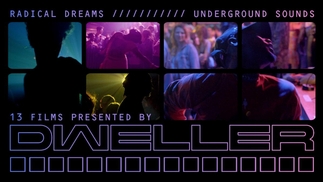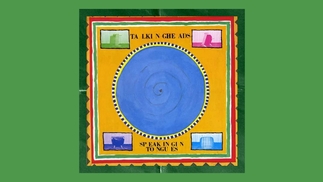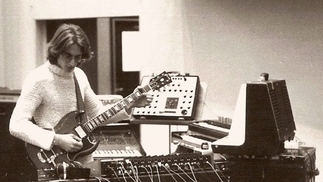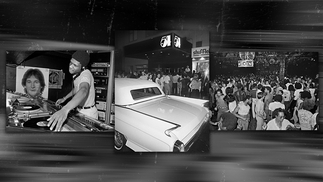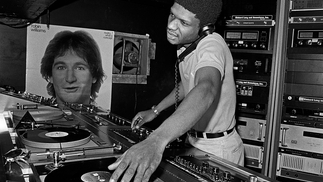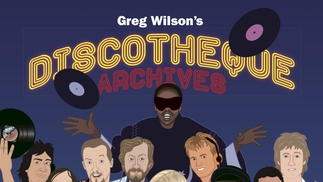GREG WILSON'S DISCOTHEQUE ARCHIVES #5
A guide to dance music's pre-rave past...
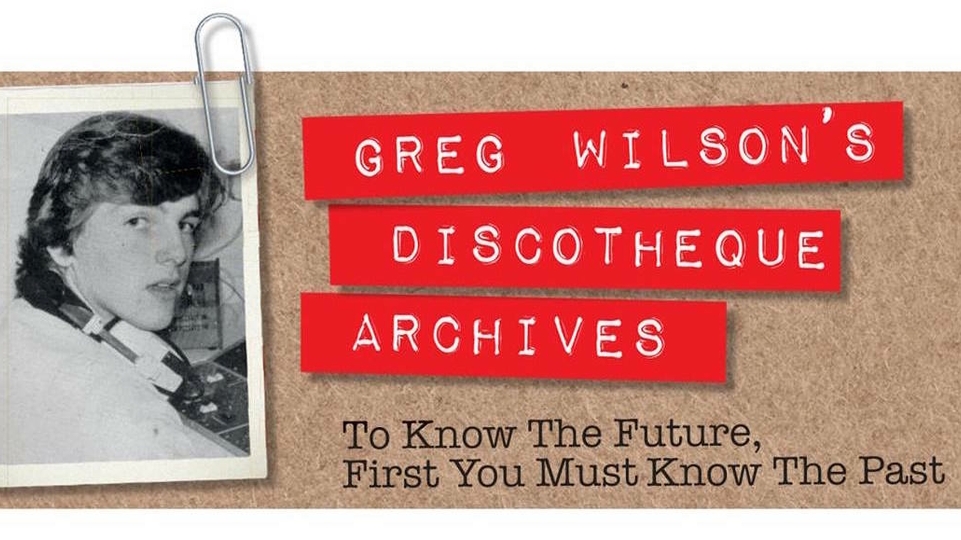
We've drafted in Greg Wilson, the former electro-funk pioneer, nowadays a leading figure in the global disco/re-edits movement and respected commentator on dance music and popular culture, to bring us four random nuggets of history; highlighting a classic DJ, label, venue and record each month.
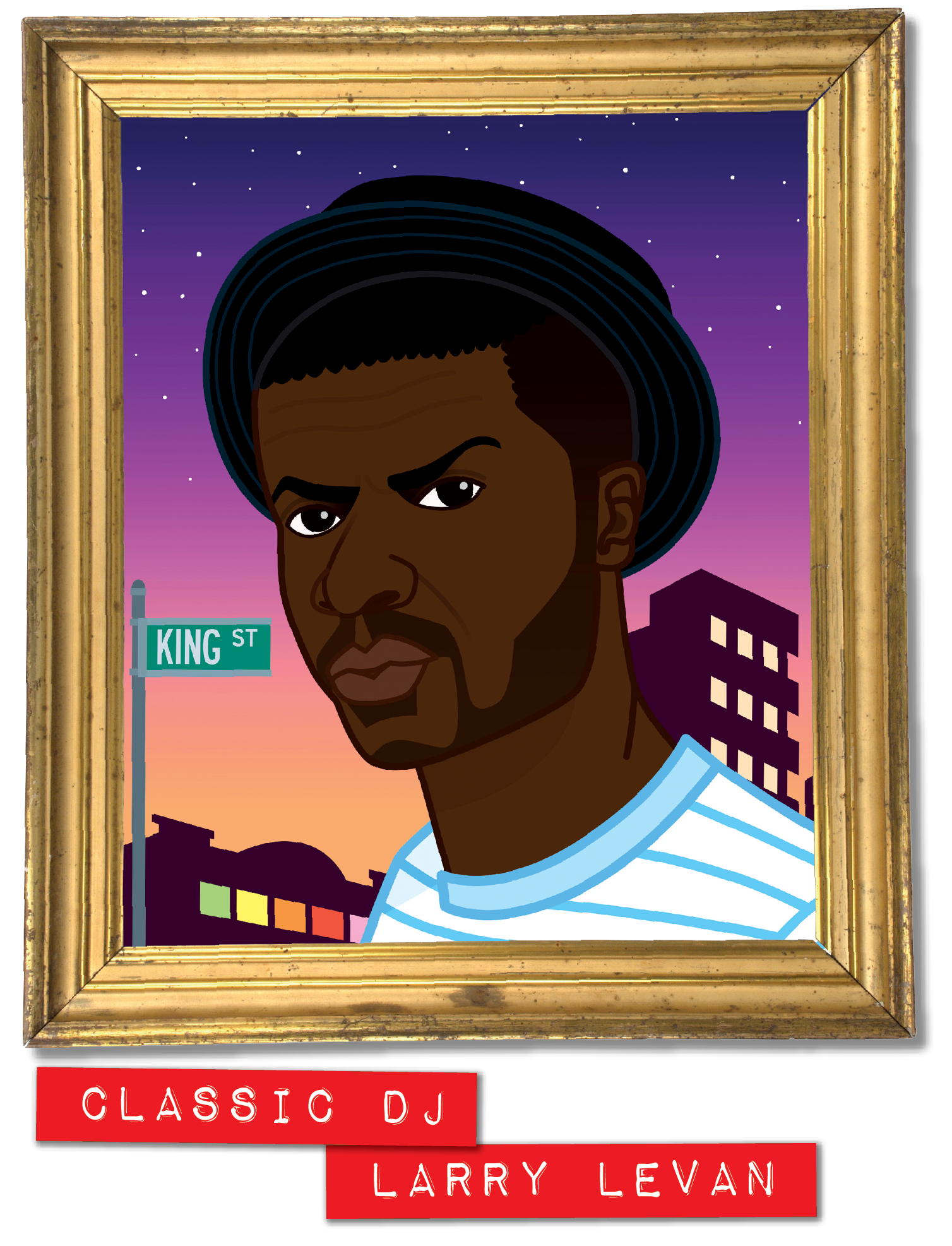
DJs don’t come any more iconic than Brooklynite Larry Levan (Lawrence Philpot), whose residency at New York’s Paradise Garage (1977-1987) has become the stuff of legend - a shining example of what can be achieved in a club space where all essential elements are working at their optimum.
Levan was inspired by NY pioneers David Mancuso and Nicky Siano - Mancuso’s Loft parties setting the tone for New York’s disco epoch, bringing together black, white, gay and straight. Levan met his great friend Frankie Knuckles via Harlem’s drag ball subculture, the two DJs in waiting destined for greatness, both starting out at the Continental Baths in the mid-‘70s, a gay 24-hour bath house featuring DJs and live music.
Having also worked at the Michael Brody owned Reade Street club, Levan was offered the residency at Brody’s grand new venture, the Paradise Garage. With its state-of-the-art Richard Long sound system taking audio reproduction to new levels within a club environment, the Garage would establish itself at the vanguard of New York’s dance underground, and is nowadays considered one of the greatest clubs of all-time. Another of the now classic venues, The Warehouse, then just opening in Chicago, tried to entice Levan into a change of city, but it was all in vain. Instead they switched their attention to his friend, providing the opportunity for Frankie Knuckles to experience his own great adventure.
Levan’s idiosyncratic approach and eclectic leanings, combined with his increasing appetite for drugs, meant that the unexpected was never far away when Larry played. The crowd adored him; as did the industry, his proven ability to break records making him the period’s most powerful club DJ - record companies and radio stations well represented amongst the regular attendees.
Levan would also become one of the pre-eminent remixers of his era, his first, Instant Funk’s ‘I’ve Got My Mind Made Up’, a major triumph in 1978, with other memorable mixes for artists including Gwen Guthrie, Inner Life, David Joseph and his own Peech Boys project.
The closure of Paradise Garage, due to Brody’s AIDS diagnosis, devastated Levan, and things began to darkly spiral downwards, the sale of his precious records funding the heroin addiction that rendered him unemployable.
He experienced a brief swansong in the early ‘90s, when he spent time in London, appearing at the newly opened Ministry Of Sound, whilst tweaking the club’s Richard Long system. His final DJ appearances were in 1992, during a Japanese tour. He died of heart failure on returning to New York – he was just 38.
In 2003, the documentary film ‘Maestro’ paid tribute to Levan and his legacy.
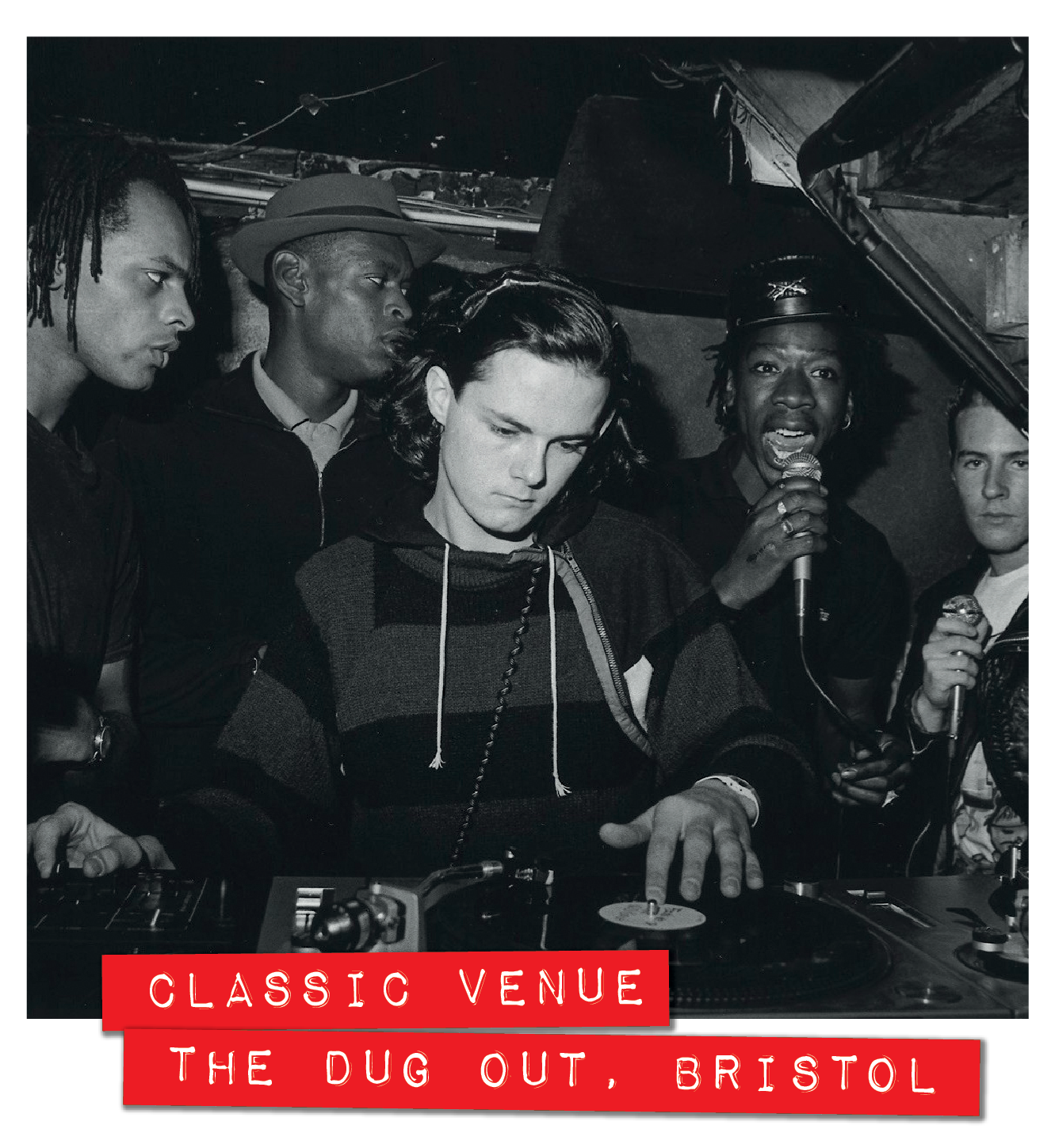
During the early ‘80s, clubs and all-dayers, north and south, were the main focus of the UK black music scene. However, little at the time was written about what was bubbling out west in Bristol.
Something special was fermenting in this multicultural melting pot, and it was perhaps Bristol’s very isolation that enabled the cultivation of its own sound, on its own terms.
What set Bristol apart was a unique fusion of hip-hop and reggae (with a post-punk sprinkle) that came to be known - much to the distaste of its originators - as ‘trip-hop’. This contrasted with the north and south, where reggae generally wasn’t played alongside the US imports that defined the scene – this separation resulting from a ‘70s schism, where young blacks identified as either dubheads or funkheads.
Against the backdrop of the St Pauls race riots in 1980, a convergence of varying Bristolian underground scenes helped weave together the diverse strands, with The Dug Out, a long-standing dive, finding itself situated in a prime location for this new streetwise movement.
DJ Milo (Milo Johnson) was the catalyst for what was to follow. He teamed up with Nellee Hooper, whose claim to fame was a 1981 Top Of The Pops cameo as percussionist with the band Pigbag. Together with reggae aficionado Daddy G (Grant Marshall) they began to DJ at house parties covering a wide range of musical styles, but with the emphasis increasingly on slower rhythms and ambient electronic atmospheres – this would provide the foundation of the subsequent ‘Bristol Sound’.
Pooling their resources the trio built their own sound system, appearing under the collective name of The Wild Bunch (after the 1969 outlaw movie). In 1983 they secured Wednesday at The Dug Out – their electro/hip-hop sensibility attracting local breakdancers and graffiti writers. Broadening their horizons, they added further members, 3D (Robert Del Naja), Mushroom (Andrew Vowles), Willy Wee (Claude Williams) and Tricky Kid (Adrian Thaws), and links were forged with London crews like Newtrament and Mastermind.
The Dug Out closed in 1986 and The Wild Bunch disbanded in 1988 – the phoenix rising with Daddy G, 3D and Mushroom forming Massive Attack. Nellee Hooper would become one of the world’s most in-demand producers after a breathtaking run of hits, working with artists including Soul II Soul, Massive Attack, Sinéad O’Connor and Björk. Other acts, all with a debt of gratitude to this integral venue, included Smith & Mighty, Tricky, Portishead and Roni Size – their recordings establishing Bristol as one of the UK’s musical hotbeds. Graffiti would also become ingrained in the city’s culture, its most famous son, Banksy, revered globally.
In 2002, DJ Milo compiled and mixed 'The Wild Bunch (Story Of A Sound System)' for Strut Records, offering an insight into into some of music played at The Dug Out.
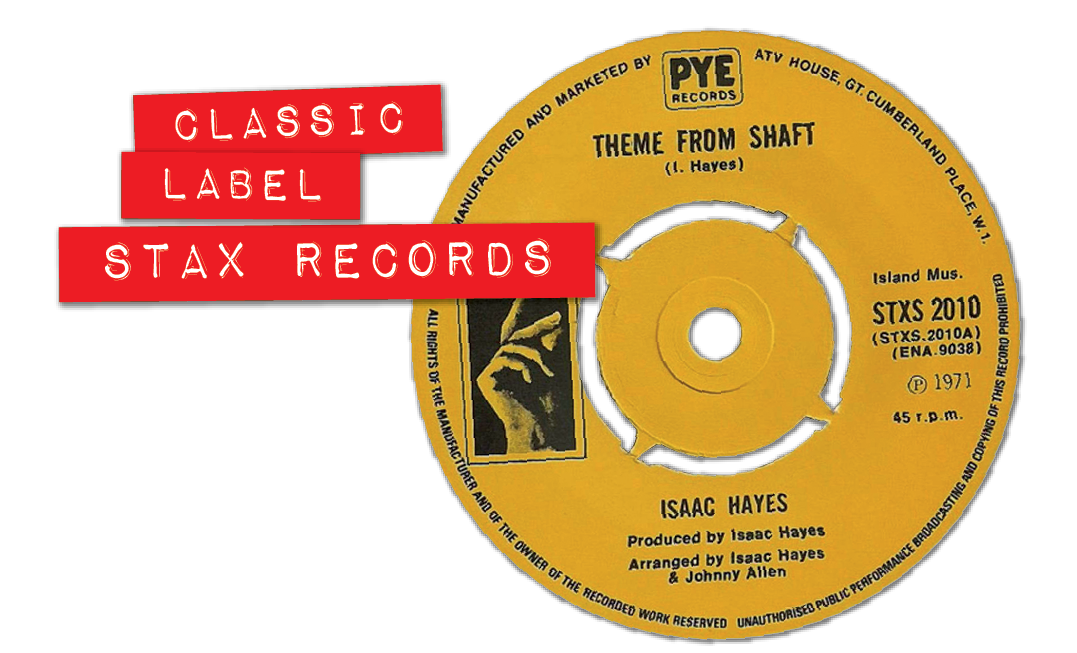
Rising out of Memphis, Tennessee, a cultural crossroads connecting the blues, gospel and country music, Stax Records, operating from a converted theatre, was amongst soul’s greatest labels. Formed in 1961 by siblings Jim Stewart and Estelle Axton (the first 2 letters of their surnames combined to spell the label name).
Its mighty house band, Booker T. & The M.G’s, consisting of Steve Cropper (guitar), Al Jackson (drums), Donald ‘Duck’ Dunn (bass) and Booker T. Jones (keys), not only released their own records, but backed artists of the stature of Sam & Dave, Eddie Floyd, and the great Otis Redding. Such a group was remarkable in America at that time, let alone Memphis – 2 black guys, 2 white, at a time when, outside of Stax, it was still a segregated city, rooted in racism.
Whilst the self-proclaimed ‘Hitsville USA’ summed up the more polished approach of Motown in Detroit, the grittier Stax declared itself ‘Soulsville USA’. It became a label associated with the mods in the UK and, along with Tamla Motown and Atlantic, was responsible for a wealth of soul music released here in the ‘60s and ‘70s.
In 1967 the ‘Stax-Volt Tour’ came to Europe – a full musical revue starring Otis Redding, Sam & Dave and Booker T. & The M.G.’s plus more. It was a revelation for both musicians, blown away with the response they received, and audience, blown away with what they witnessed. Redding, arguably the greatest soul singer of all, played the Monterey Pop Festival in California the following June. Pre-dating Woodstock by over 2 years, this was first major gathering of its type, with Redding wowing the hippie crowd. Less than 2 months later he perished in a plane crash, along with 4 members of the young Stax band The Bar Kays.
This happened as the label was still reeling from another devastating blow, Stewart learning he’d unwittingly signed away the rights to the entire Stax catalogue to distributor, Atlantic. Then, in 1968, Martin Luther King Jr. was assassinated in a Memphis hotel frequented by the artists and label employees. The spell had been broken and the mood irreversibly changed - it was never the same for Booker T. & The M.G.’s, who would eventually leave Stax in 1971.
Moving into the ‘70s, Stax took a more business-minded approach under Al Bell’s stewardship, and flourished for a time thanks to artists like Isaac Hayes, the Staples Singers, and a revitalized Rufus Thomas, enjoying a funky renaissance best witnessed in the classic concert film ‘Wattstax’ (1972). However, another ill-fated deal, this time with CBS records, would bring about the labels mid-‘70s demise.

During the mid-‘70s, as disco began to really make its mark on the mainstream, The Trammps were dance music’s foremost exponents, having scored a run of hits including ‘Zing Went The Strings Of My Heart’, ‘Hold Back The Night’ and ‘That’s Where The Happy People Go’. However, their best-known release is 1977’s ‘Disco Inferno’ on Atlantic Records, one of the defining singles of the entire era. From the moment Earl Young’s cymbal crash dramatically announced its arrival, you knew you were in for a ride as the track’s relentless groove grabbed the dancefloor by the scruff of the neck – the great Tom Moulton’s epic full-length 10 minute 54 second mix a masterwork.
Along with bassist Ronnie Baker and guitarist Norman Harris (who were also members of MFSB), Young made up the crack rhythm section that provided the production team behind The Trammps (Baker–Harris–Young). This was augmented by the sensational vocals of the gospel-influenced Jimmy Ellis.
Young wasn’t just a drummer, but a celebrated beat creator, regarded as the innovator of the disco style of rock drumming. Apart from his role in The Trammps, he was also the rhythmic hub of MFSB (Mother Father Sister Brother), the orchestra of musicians assembled out of Philadelphia’s Sigma Sound studio, famed for its recordings for the Philadelphia International label, home of the ‘Philly Sound’. With an array of hitmakers including The O’Jays, Harold Melvin & The Bluenotes and The Three Degrees (as well as MFSB themselves), this was the benchmark label of the early-mid ‘70s proto-disco period. Later in the decade Young and other prominent MFSB members would defect to New York’s hugely influential Salsoul Records, co-producing and playing on another wave of disco classics, including the first officially released 12”, ‘Ten Percent’ by Double Exposure, issued on the label in 1976.
Written by Leroy Green and Trammps keyboardist, Ron ‘Have Mercy’ Kersey, and inspired by a scene in the 1974 film ‘The Towering Inferno’, where a discotheque catches ablaze, ‘Disco Inferno’ would, on its release, reach the top 20 of the British chart, but for many people it will forever be associated with the phenomenal success of the blockbuster disco movie, ‘Saturday Night Fever’, which hit the cinemas in late ’77. The soundtrack LP, on which it was featured, went on to on to become, at that point, the biggest selling album of all-time, bringing disco to wider attention in the process. However, apart from the reactivation of ‘Disco Inferno’, resulting in its chart re-entry, The Trammps would fail capitalize on the genre’s new found currency, none of their subsequent releases setting the world alight.
Written by Greg Wilson
Edited by Josh Ray
'Mr. Levan' illustration by Pete Fowler
Check out the previous Discotheque Archives here
Check out the next Discotheque Archives here
